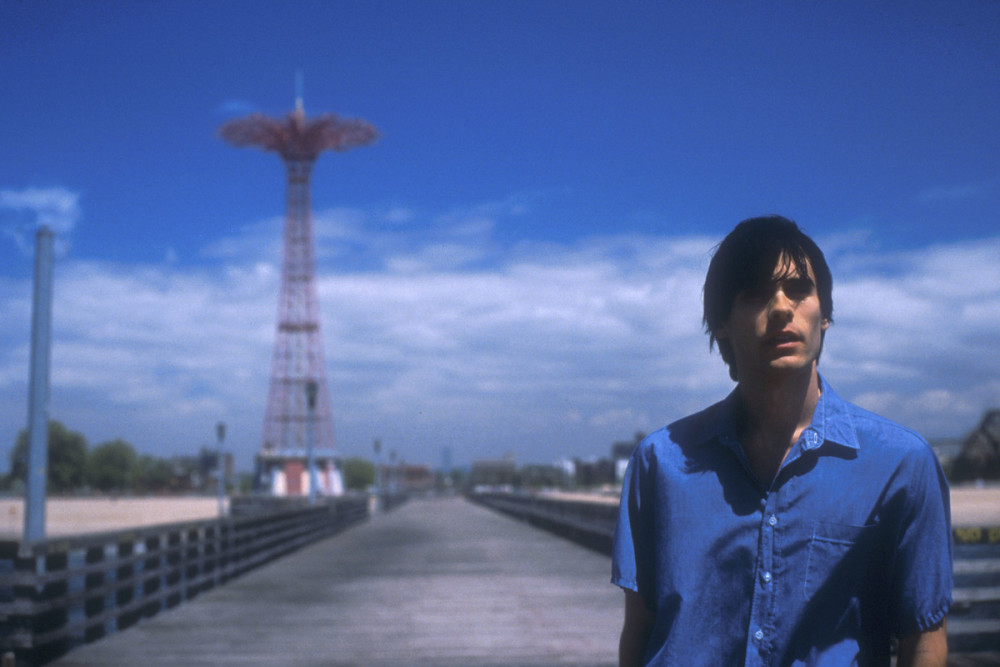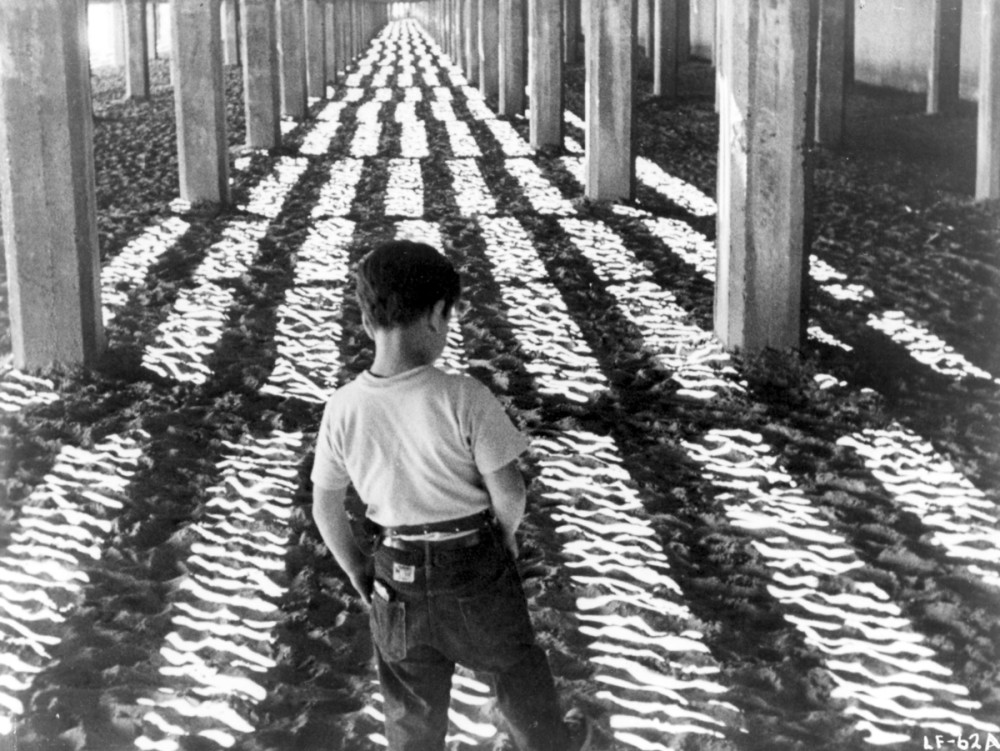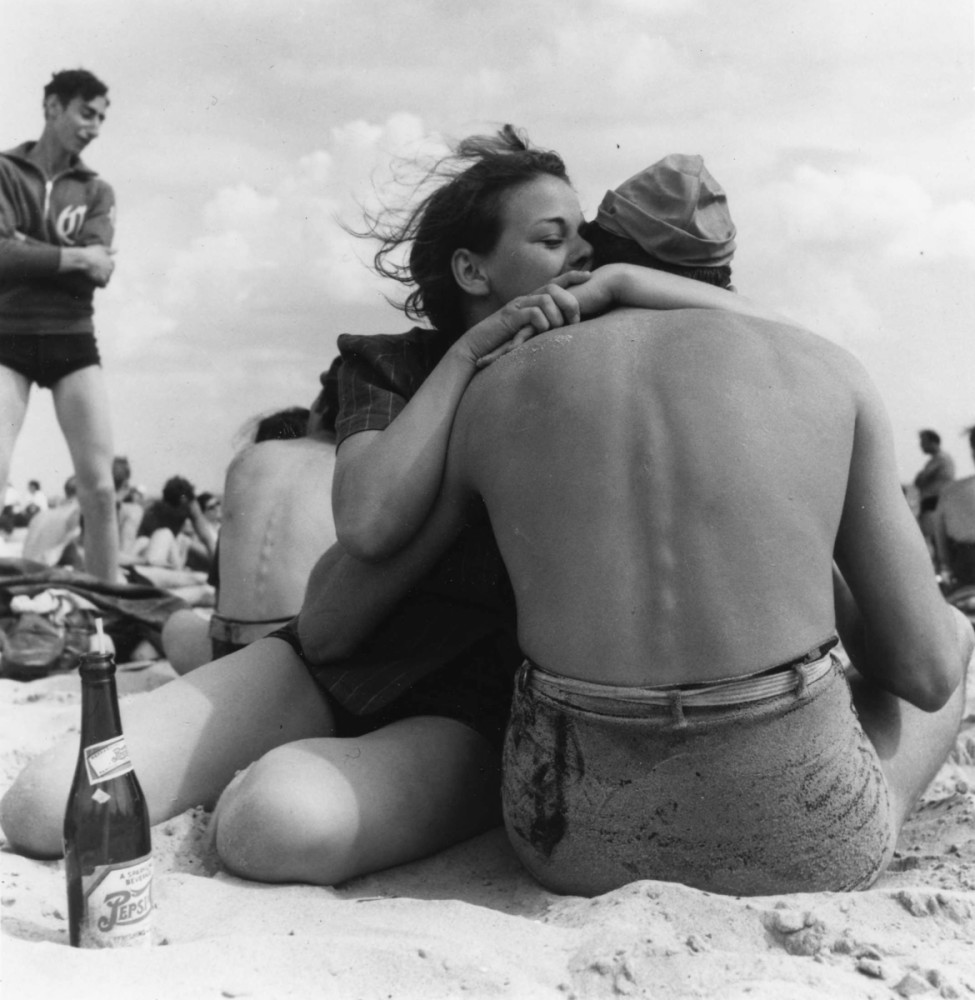Image above: Harvey Stein (American, born 1941). The Hug: Closed Eyes and Smile, 1982. Digital, inkjet archival print, 13 x 19 in. (33 x 48.3 cm). Collection of the artist. © Harvey Stein, 2011
The Brooklyn Museum’s newest exhibition, Coney Island: Visions of an American Dreamland, 1861-2008, which chronicles Coney Island’s history from the 1860s to the present, functions not only as a record of the area’s reputation as a bustling seaside resort and amusement park, but also as a lens which offers a look into the city’s evolution and the state of American society at a given point in time.
 Image above: Requiem for a Dream, production still, directed by Darren Aronofsky, 2000. Artisan Entertainment. Photo: Artisan/Photofest; © Artisan
Image above: Requiem for a Dream, production still, directed by Darren Aronofsky, 2000. Artisan Entertainment. Photo: Artisan/Photofest; © Artisan
The collection includes ornate carousel horses, photographs of visitors on the beach, early film clips filmed on location at Coney Island’s Luna Park amusement park, paintings, and even hand painted freak show banners advertising appearances by strange and unique characters like “Shackles the Great,” a muscular pirate who is shown attempting to escape from a series of padlocked shackles wrapped around his arms, wrists, and neck.
 Image above: Homer Page (American, 1918–1985). Coney Island, July 30, 1949. Gelatin silver print, 11 x 14 in. (27.9 x 35.6 cm). The Nelson-Atkins Museum of Art, Kansas City, Missouri; Gift of the Hall Family Foundation, 2008.47.6. © Homer Page. Photo: John Lamberton
Image above: Homer Page (American, 1918–1985). Coney Island, July 30, 1949. Gelatin silver print, 11 x 14 in. (27.9 x 35.6 cm). The Nelson-Atkins Museum of Art, Kansas City, Missouri; Gift of the Hall Family Foundation, 2008.47.6. © Homer Page. Photo: John Lamberton
Even before the popular freak show performances of the 1930s, Coney Island’s vast boardwalk and beach attracted crowds from all racial and social backgrounds. George Bradford Brainerd’s 1880 photograph Negro Family, Coney Island, Brooklyn, captures a black family spending the day at the beach, which serves as historical evidence of the area’s racially diverse and accepting atmosphere.
 Image above: Little Fugitive, production still, 1953. Gelatin silver print, 8 x 10 in. (20.3 x 25.4 cm). A Morris Engel Production. Photo: Joseph Burstyn/Photofest; © Joseph Burstyn, Inc.; © Morris Engel
Image above: Little Fugitive, production still, 1953. Gelatin silver print, 8 x 10 in. (20.3 x 25.4 cm). A Morris Engel Production. Photo: Joseph Burstyn/Photofest; © Joseph Burstyn, Inc.; © Morris Engel
It’s no surprise that the area’s unique character and progressive air became a source of inspiration for filmmakers, painters, and writers alike. In a clip from the 1935 film The Gilded Lily, a couple enjoys a ride on Coney Island’s infamous Thunderbolt coaster, while another clip entitled The Crowd from 1928 shows a crowd spying on couples in Coney Island’s tunnel of love, presenting the park and beach as popular hotspots for romance. The red and yellow stripes of Frank Stella’s Coney Island allude to the colorful circus tents and beach towels that once dotted the beach, while also drawing inspiration from the early hand painted carnival signs and art that once saturated the area. Also on view is a copy of Lawrence Ferlinghetti’s book of beat poetry, A Coney Island of the Mind. In it, Ferlinghetti writes:
I once started out
to walk around the world
but ended up in Brooklyn,
that Bridge was too much for me.
 Image above: Morris Engel (American, 1918–2005). Coney Island Embrace, New York City, 1938. Gelatin silver print, 10 9/16 x 11 ½ in. (26.8 x 29.2 cm). Orkin/Engel Film and Photo Archive. © Morris Engel
Image above: Morris Engel (American, 1918–2005). Coney Island Embrace, New York City, 1938. Gelatin silver print, 10 9/16 x 11 ½ in. (26.8 x 29.2 cm). Orkin/Engel Film and Photo Archive. © Morris Engel
After a fire destroyed most of Coney Island’s Luna Park in 1944, the area fell into disrepair and no longer served as a picture of carefree American life. Photographs by Henry Koerner, Joseph Burstyn, and others show individuals struck down by poverty who have found shelter under the once crowded boardwalk. Others show the shirtless, weapon-wielding gang members who eventually called the decrepit and gritty area home. As the exhibition moves through time to the present, however, these sad images fall away and are replaced by works celebrating the area’s long and colorful history. After decades of abandonment, Coney Island has finally returned to the dazzling and lustrous playland that it was intended to be.
Coney Island: Visions of an American Dreamland, 1861-2008 will be on view at the Brooklyn Museum through March 13, 2016.
By Stephanie Kotsikonas


